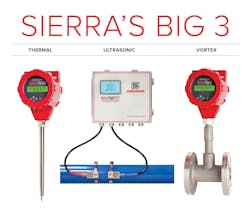There’s no part of the manufacturing process that hasn’t been impacted by techy advances related to Industry 4.0, the Internet of Things (IoT), artificial intelligence, automation and the like — including fluid control.
As with other areas of operation, these kinds of innovations can help reduce human error, increase quality, lead to meaningful data collection, help with regulatory compliance and speed up the manufacturing process.
“As the drug industry matures, the demand for increased quality and innovations has been coupled with an even bigger demand to decrease time to market and the cost of development for manufacturers,” Peter Levison, executive director of business development at Pall Biotech, says. “The industry has recently responded with a call for automated integrated processes and we are starting to see a lot of progress in finding new approaches.”
Remote Controls
With many pharma plants operating around the clock, the need to keep tabs on every part of operations is a never-ending endeavor. Remote monitoring has made this task much less labor intensive.
“The industry has been looking for new solutions, and we will continue to see and develop advanced technology that will allow technicians to remotely monitor and control pumps securely 24/7 from their smartphone, tablet or computer,” Gregg Johnson, global senior product manager, Masterflex and Ismatec, at Cole-Parmer says. “We will see less personnel working around the clock onsite physically checking and monitoring pumps. More offsite and off-hour technicians will be able to verify pump operational status and respond to status and error alerts.”
One of this year’s Pharma Innovation award winners (read our cover story on page 14) is Petasense’s Asset Reliability & Optimization System, an end-to-end, wireless predictive maintenance system that gauges the health of critical equipment such as reactor tank motors and feed pumps, and volumetric and pressure fill pumps. The key features in this system are the web and mobile applications that make it possible for operators to visualize asset health and performance, and receive real-time alerts from anywhere at any time.
As Johnson notes, remote monitoring also increases safety.
“This technology allows pumps to be used in applications where runs may need to be initiated during ‘off’ hours, and allows for remote control of pumps operating in cleanrooms, glove boxes or isolation chambers to distance technicians from harmful chemicals and situations,” Johnson says.
As is the case with Cole-Parmer’s Masterflex cloud-enabled pumps featuring its MasterflexLive platform, data collection is often a byproduct of these new tools, giving manufacturers useful insights for analytics and quality improvement.
“We are seeing a drive to paperless compliance which fits very well with connected fluid handling products that deliver performance data directly to the cloud. The use of big data and analytics collected from the fluid handling path can drive efficiences in workflow, predictive maintenance, and ease compliance with federal regulations,” Johnson says.
Future-Proof Flow Meters
Although equipment vendors are continuously improving the technology of their products, manufacturers are not always keeping up. When it comes to flow meters, many are still investing in products that aren’t compatible with the latest Industry 4.0 updates — which can lead to costly updates.
“To be Industry 4.0 ready, flow meters and controllers must have the ability to connect and communicate with pharma manufacturing processes and immediately provide trustworthy flow data,” Scott Rouse, vice president of product management at Sierra, says. “Flow measurement devices that fit the bill must offer precision flow accuracy, reliable repeatability, offer a full suite of digital communication protocols, and be flexible to change in the applications — and do all this without having to shut down the manufacturing process.”
Many of the newer flow meters are bringing fluid control into the Industry 4.0 era by offering the ability to measure and control gas flow, and communicate that information to operators to help them make informed decisions about the process.
“Since all chemical reactions are mass-based, direct mass flow is an indispensable requirement,” Rouse says.
Pall Biotech has also begun to re-think its portfolio and how it can offer total, integrated solutions.
“As we continue to refine the portfolio via product updates or additions, we are paying closer attention to how we can automate and integrate unit operations to build flexibility into each piece of equipment,” Levison notes.
The company’s Cadence Virus Inactivation system, for example, has been designed for integrated unit operation — the single-use fully automated system consists of two mixers that can work in continuous or batch mode. It also allows low pH virus inactivation of an incoming elution stream continuously by automating elution collection, titration to low pH, hold, titration to high pH, and then transfer out steps — for 24 hours, if needed.
Sealing the Deal
Seals may not seem like the most tech-intensive components in fluid control, but there is a lot of work going into the R&D of new products.
As manufacturers work with a higher range of temperatures and look to speed up their processes with higher pressures, vendors for fluid control seals are finding new ways to meet these evolving needs. The R&D team at Saint-Gobain, for example, has been working on innovating a new line of OmniSeal spring-energized seals made with high-performance materials that can handle more diverse demands.
“Our global R&D teams are focusing on material formulation, characterization and processing to create new sealing solutions to keep pace with increasing demands for pressure, temperature and life cycle requirements for pharmaceutical applications,” Ronelle Decker, the market manager for Life Sciences at Saint-Gobain, says.
Whether it’s with updated components or innovative tech, equipment vendors are developing new ways to keep up to speed with fluid control in manufacturing.
[javascriptSnippet]






